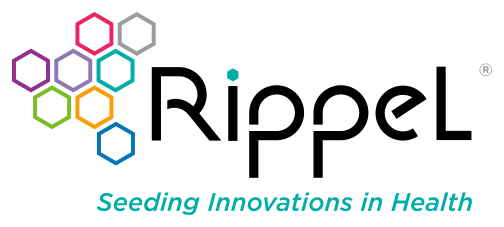Glossary of Terms
A learn-as-you-go approach to project design and evaluation that prioritizes rapid cycles of action, reflection, and adaptation, integrating multiple points of view along the way. More than observation, it is a way to build insights informed by everyone involved in a change effort and strengthen capacity across individuals, organizations, and networks.
Belonging and civic muscle is central to the vital conditions that everybody needs to thrive together. Belonging is feeling part of a community, embraced for who you are, and valued for what you bring. Civic muscle is the power to work across differences and shape our common world. Taken together, belonging and civic muscle is both a vital condition unto itself as well a pragmatic capacity that is necessary for equitable progress in every other kind of work. Efforts to expand belonging and civic muscle are both means and ends in an intergenerational movement for well-being, equity, and racial justice.
Complex adaptive systems are systems with many players, interacting parts, and multiple (and massively entangled) boundaries leading to emergent outcomes that are often difficult (or impossible) to predict by looking only at the individual interactions. They are constantly evolving, with no clear start or end points. Wherever stewards work, locally or nationwide, from within a single organization or across many, they always work in complex adaptive systems.
Emerging effects are the unfolding consequences of actions within a complex adaptive system. They encompass a full spectrum of results that emerge through engagements with ReThink Health, including shifts in practice of project participants (i.e., mindsets and actions) and shifts in context (i.e., strategies, policies, resource flows, and relationships).
Efforts to overcome fragmentation and work across differences require intentional interdependence. Instead of a futile attempt to be all things to all people, stewards can distribute leadership across networks of organizations, cultivating an understanding of their own unique roles and the roles of others. This can enable closer alignment, deeper and more focused working relationships, and stronger mutual accountability.
One action with many benefits.
A practical, explanatory way of evaluating interventions in complex adaptive systems and generating insights that are useful for decision makers by asking “what works, for whom, in which circumstances?” rather than merely “did it work?”
A growing network of people and organizations see themselves—and one another—as interdependent stewards in a movement for well-being, equity, and racial justice. Stewardship is never a solo enterprise. Stewards, by definition, work together to create conditions that everyone needs to thrive together, beginning with those who are struggling and suffering. When changemakers join in a movement of shared stewardship, they can transform legacies of injustice and create a system in which everyone has a fair chance to participate, prosper, and reach their full potential. Stewardship is broader than leadership or governance. It is a way of seeing the world and making decisions that will build and sustain legacies for living together.
A short, memorable set of shared principles or guidelines (usually five to seven) that support aligned action within and across organizations and residents in a community. Simple rules help to align values, build collective understanding across scales, and shift strategies and investments to expand the vital conditions for health and well-being.
Everyone can be a steward. Stewards are people, organizations, and networks who work with others to create the conditions everybody needs to thrive together, beginning with those who are struggling and suffering.
Strategic casemaking is a way of building public will for equitable system change. By leading with messages about solutions and inclusion, not crisis and separation, it brings new people and organizations into the movement for an equitable, thriving future and strengthens the commitment of those already engaged.
Recent research found that strong-tie networks—relatively small networks of individuals and organizations who share strong bonds of understanding and trust—may be more effective for scaling transformative change than much larger networks in which understanding and trust are weaker. Strong-tie networks should be intentionally designed to cultivate a diversity of perspectives, ensuring that those whose experiences are typically unheard become co-designers and full partners in the decision-making process.
A holistic approach to analysis and problem solving that focuses on the big picture to see how parts of a system connect as well as how our mindsets and actions shape consequences over time.
More and more changemakers are organizing around a single unifying and measurable expectation: All people and places thriving together—no exceptions. Efforts to thrive together focus simultaneously on well-being, equity, and racial justice. Often used as the north star or moral compass in an intergenerational movement, our quest to thrive together affirms both dignity and plurality—we are unique people in a common world, each trying to live in a way that lets others live as well. When we translate that aspiration into action, it becomes a commitment to create communities in which all people have a fair chance to participate, prosper, and reach their full potential.
Urgent services are services that anyone under adversity may need temporarily to regain or restore their best possible health and well-being. They include acute care for illness or injury (either mental or physical), addiction treatment, crime response, environmental cleanup, homeless services, as well as unemployment and food assistance.
Vital conditions are properties of places and institutions that everybody needs all of the time to reach their full potential for health and well-being. They include a thriving natural world, basic needs for health and safety, humane housing, meaningful work and wealth, lifelong learning, reliable transportation, as well as belonging and civic muscle. When one or more vital conditions are absent or impaired, people tend to struggle and suffer, driving demand for urgent services. Urgent services are essential, but they are temporary fixes that don’t directly produce thriving lives.
An intentional effort among stewards in a region to negotiate interdependent investments for well-being, equity, and racial justice. It entails adjusting the relative balance of vital conditions and urgent services to realize an equitable, thriving future.
